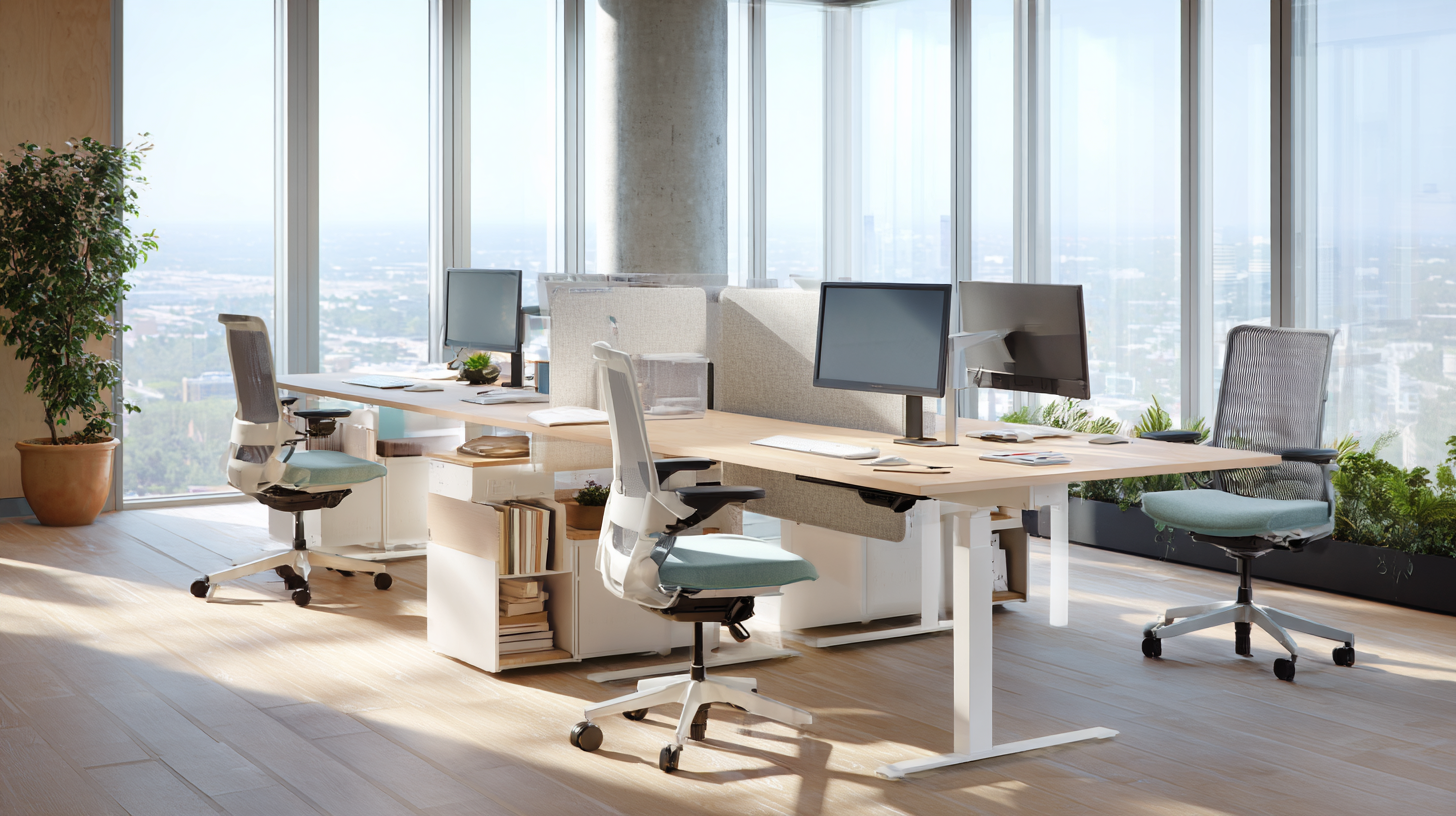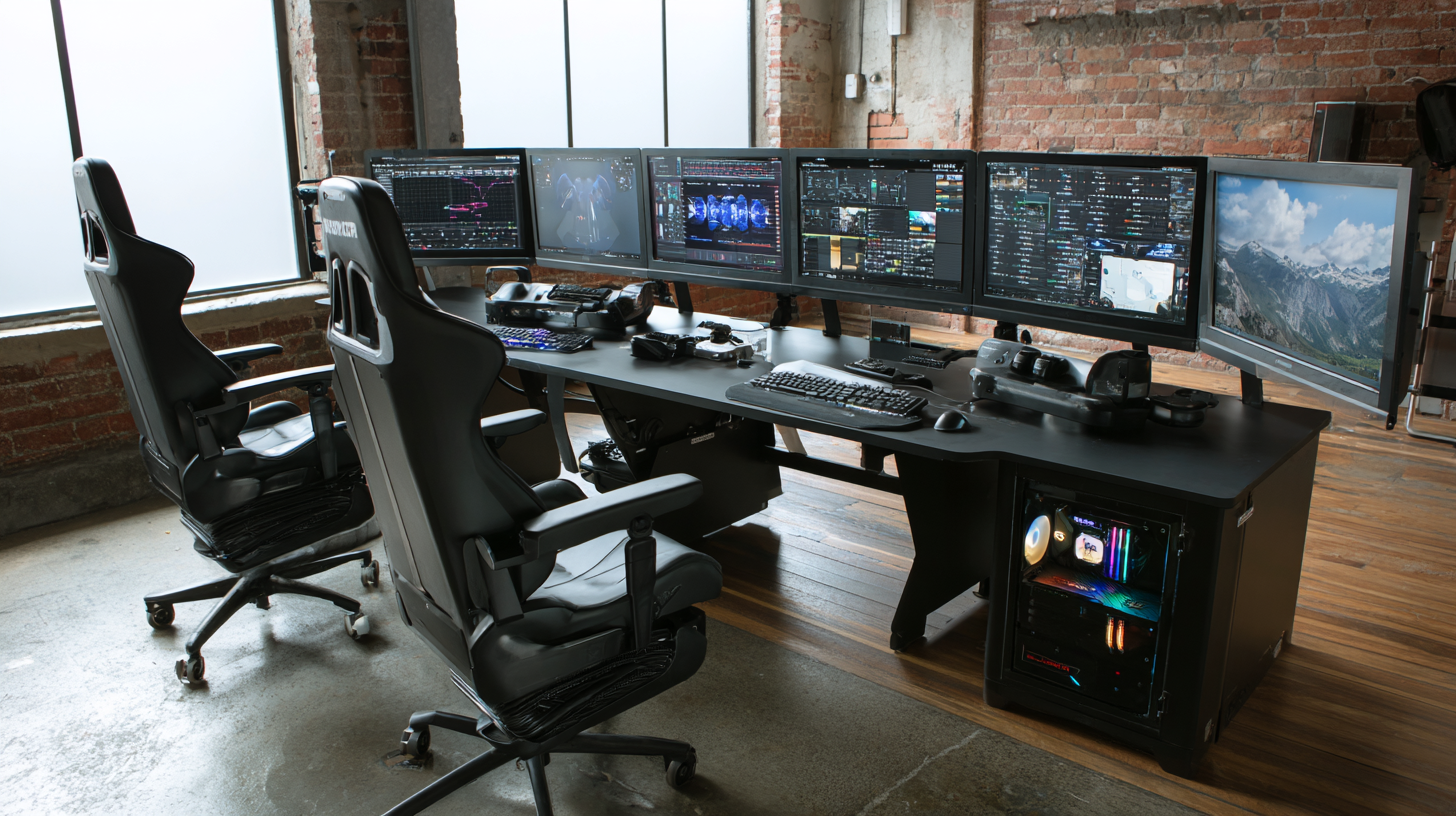In today's evolving workspace, operator chairs have become pivotal in enhancing employee comfort, productivity, and overall well-being. A recent survey by the International Ergonomics Association highlights that ergonomic seating can improve workplace productivity by up to 20%, underscoring the importance of selecting the right operator chairs. However, as global buyers seek innovative alternatives to traditional options, considerations around after-sales service advantages and maintenance costs come to the forefront. Many companies are now exploring digital solutions and maintenance tips that not only reduce operational inefficiencies but also extend the lifespan of these essential office assets. This blog aims to delve into the myriad of innovative options available in the market, complementing conventional operator chairs with cost-effective, sustainable, and ergonomically sound alternatives.

When exploring innovative alternatives to the best operator chairs for global buyers, the importance of ergonomics in modern office chairs cannot be overstated. A well-designed ergonomic chair plays a crucial role in enhancing posture, which is vital for maintaining productivity over long hours at work. Poor seating can lead to discomfort and inefficiency, directly affecting one's performance. Investing in a chair that offers adequate lumbar support and adjustable features can significantly improve comfort and reduce the risk of musculoskeletal issues.

When selecting an office chair, consider the following tips: Firstly, look for chairs that provide adjustable height, armrests, and lumbar support to cater to your individual body type and working style. Secondly, test the material of the chair; breathable fabrics can enhance comfort during extended sitting periods. Lastly, prioritize chairs that combine functionality with style, ensuring that your workspace is both inviting and conducive to productivity.
As companies increasingly recognize the link between ergonomics and employee efficiency, the market for ergonomic chairs is poised for significant growth. Innovative designs that integrate technology and ergonomic principles are transforming workspaces into hubs of comfort and efficiency, encouraging a work environment that supports both well-being and productivity.
In recent years, the landscape of operator chair design has evolved significantly, driven by the need for
enhanced comfort and productivity in the workplace.
Innovative materials and ergonomic features are at the
forefront of this transformation, allowing manufacturers to create chairs that not only support the body
but also promote well-being. For global consumers,
this shift embodies a growing awareness of the importance of health in office environments, with designs
that cater to diverse working styles and preferences.
Emerging trends reflect a seamless blend of aesthetics and functionality, with many operators opting for
customizable options that allow for individual expression. Sustainable materials are also gaining traction,
as eco-conscious buyers seek products that align with their values. Furthermore, advances in technology,
such as integrated sitting-monitoring systems and
adjustable lumbar support, are becoming standard features. These
developments not only enhance the user experience but also position operator chairs as essential tools
for optimizing workflow and fostering a healthier workplace atmosphere.
In the quest for sustainable office environments, operator chairs are increasingly being crafted from innovative materials that not only enhance ergonomics but also prioritize ecological responsibility. One such material making waves in the furniture industry is Papembood, a unique composite derived from recycled paper and bamboo. This material boasts high mechanical performance while offering a distinct aesthetic appeal, making it a prime choice for modern operator chairs aimed at eco-conscious global buyers.
Furthermore, the concept of adaptive reuse is gaining traction in the sustainable design landscape, transforming old structures into functional, eco-friendly office spaces. By repurposing these buildings, businesses not only significantly cut carbon emissions and waste but also breathe new life into urban ecosystems. Students and emerging designers are also contributing to this wave by turning discarded materials into sustainable furniture, illustrating that innovation can flourish even in the most unconventional settings. As the focus on sustainability grows, the integration of such materials and practices into operator chair design represents a crucial step towards a greener, healthier future of work.
This chart illustrates the sustainability scores of various innovative materials used in operator chairs. The scores reflect their potential environmental impact and sustainability benefits.
In the ever-evolving landscape of office furniture, innovative brands are stepping up to redefine the operator chair market. Companies across the globe are leveraging cutting-edge technology and design principles to create chairs that prioritize comfort and efficiency. One notable trend includes the advent of smart seating solutions that cater to long hours of usage, offering features that enhance posture and support. This wave of innovation is not just limited to aesthetics but is fundamentally changing how we perceive workplace ergonomics.
Additionally, the push for sustainability in design is gaining momentum, as seen with brands introducing environmentally friendly materials and production methods. This commitment to sustainability is not only attracting eco-conscious consumers but is also setting new industry standards. As these global brands continue to experiment with form and function, the operator chair will likely evolve into a more dynamic and versatile piece of office furniture, catering to the diverse needs of a modern workforce. The future of operator chairs is bright, with endless possibilities for improvement and adaptation in the workplace.
When searching for an office chair, budget constraints often lead buyers to compromise on comfort and ergonomics. However, innovative alternatives to traditional operator chairs are emerging, providing affordable yet effective options without sacrificing quality. Brands are beginning to explore designs that cater specifically to the ergonomic needs of users while remaining budget-friendly. For instance, several new entrants in the market leverage technology and materials to create versatile chairs that adjust to individual body types, ensuring a comfortable seating experience.

It’s vital for global buyers to scrutinize chair reviews carefully, as many are influenced by hidden commissions rather than genuine user experience. By focusing on more affordable innovations, consumers can find excellent alternatives that don’t break the bank while still offering impressive ergonomics and functionality. In 2025, the notion of what constitutes a ‘best’ operator chair will likely shift towards these cost-effective solutions, prioritizing genuine value and comfort over brand prestige.
Update your browser to view this website correctly. Update my browser now
